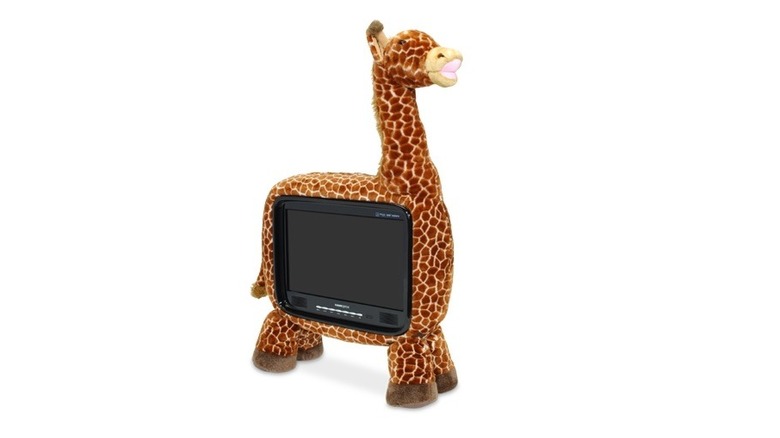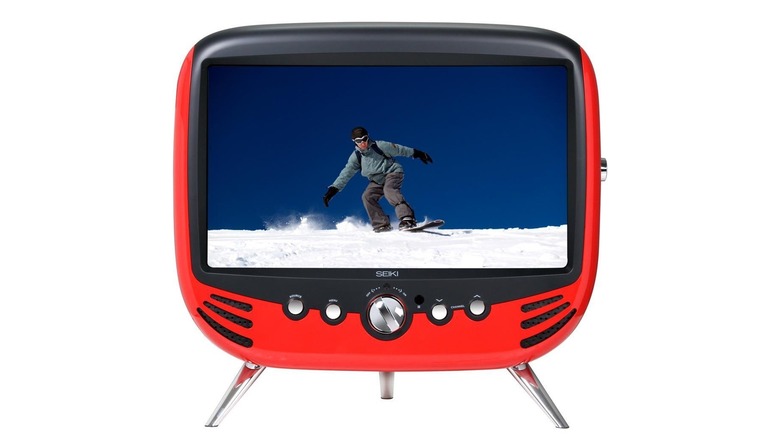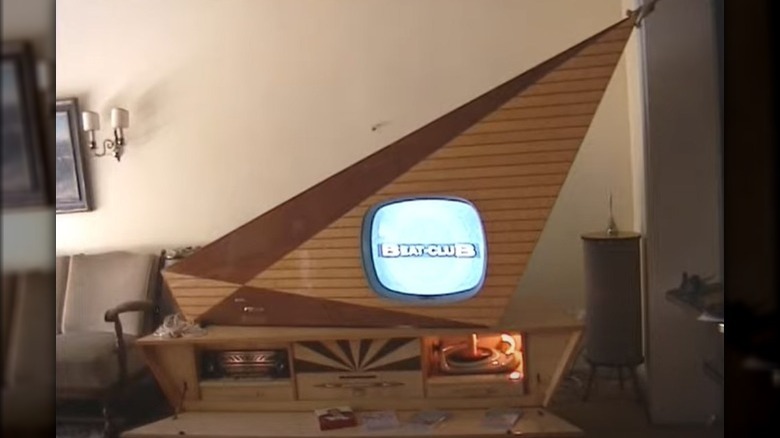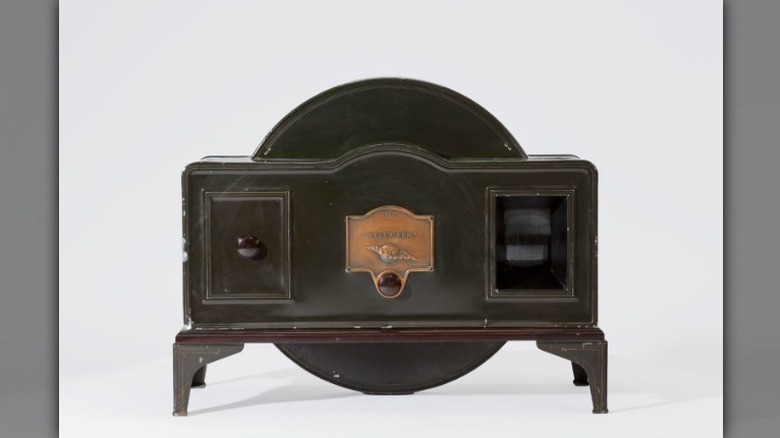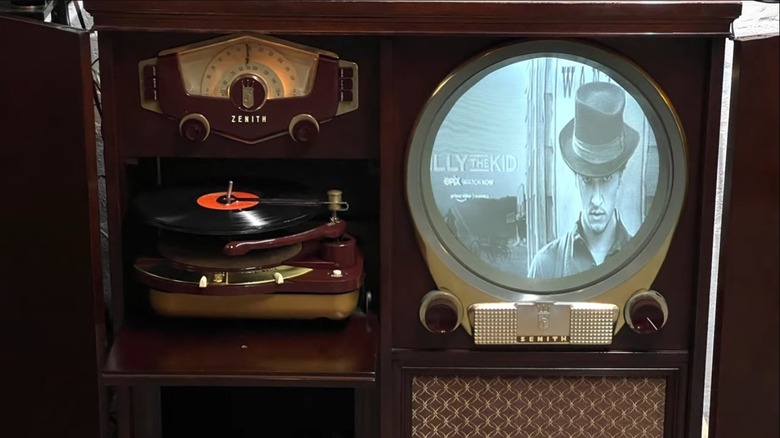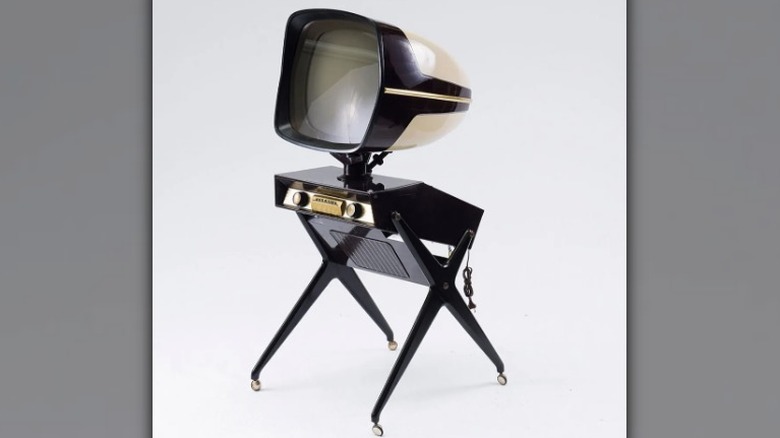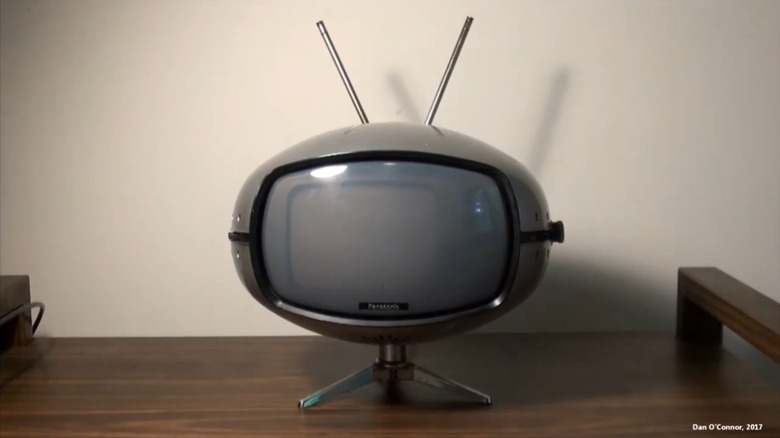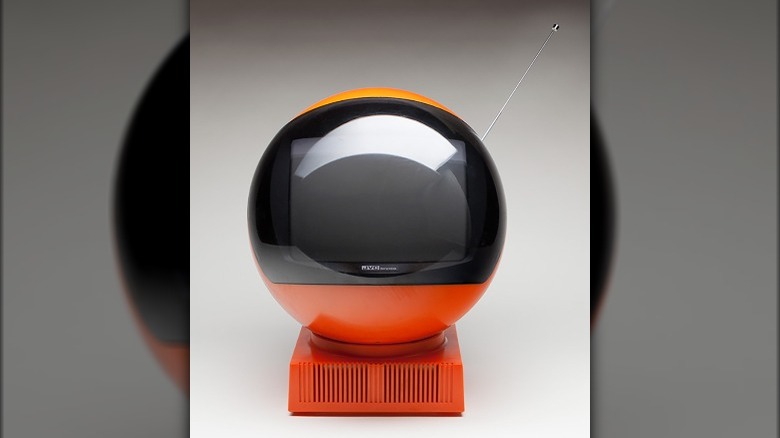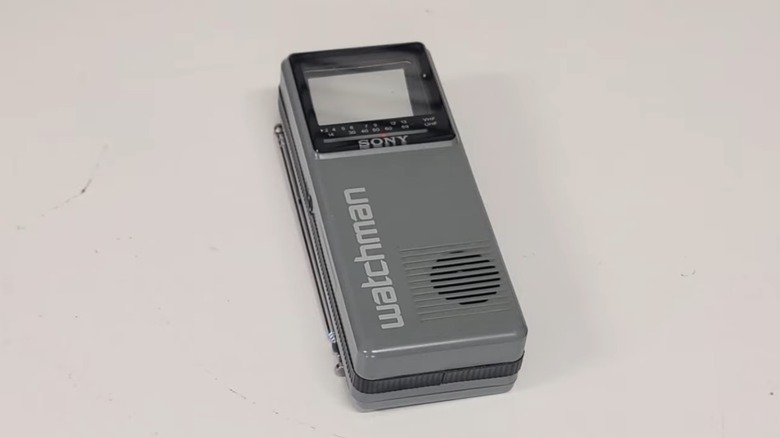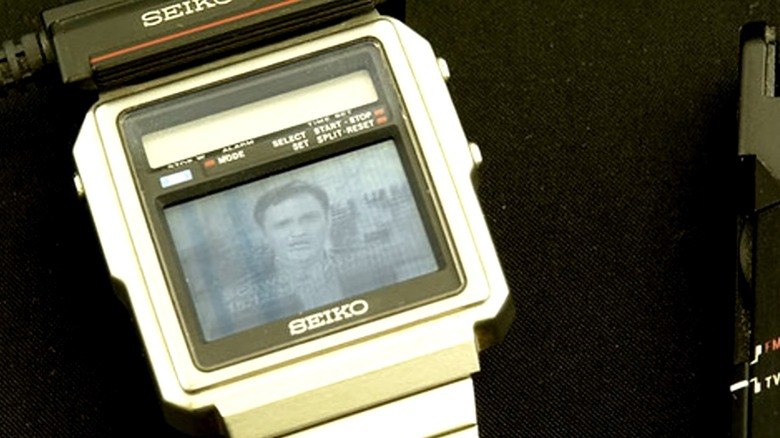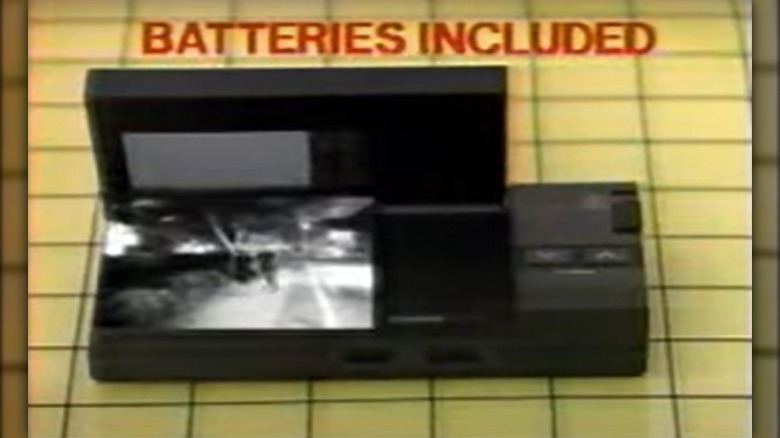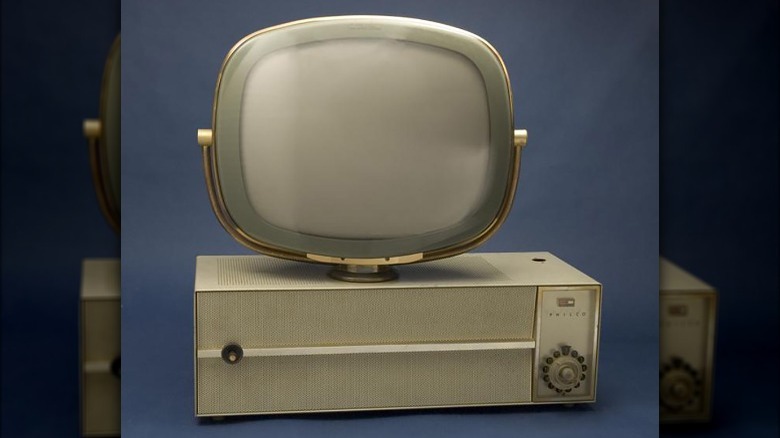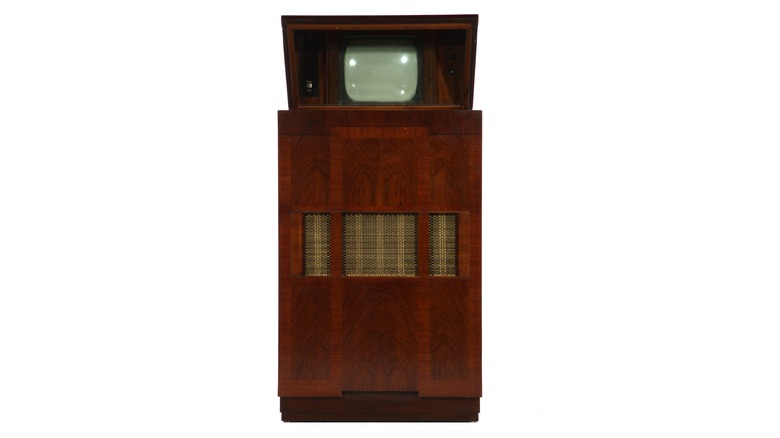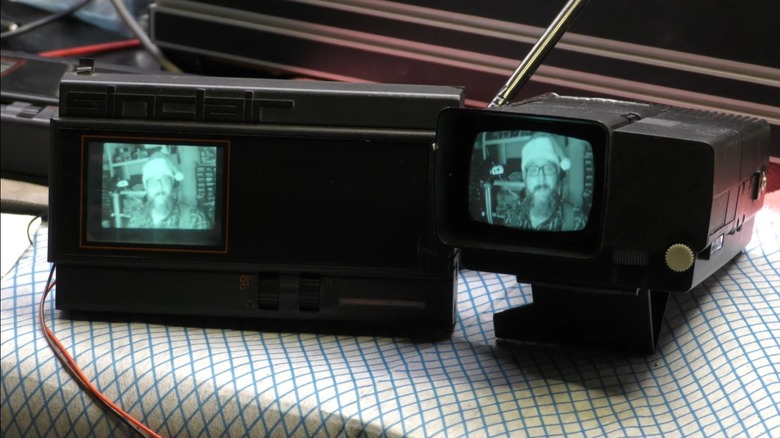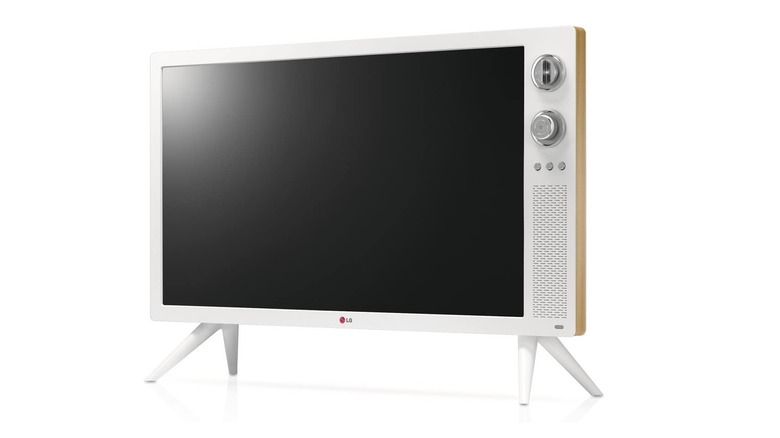The 15 Weirdest TVs Ever Made
We may receive a commission on purchases made from links.
These days, with a few exceptions, if you've seen one TV, you've seen them all. The days of showing up to your friend's living room or bedroom and marveling over their impressive TV set are mostly gone, for better or worse. While different manufacturers and even different models may have some unique features, they all tend to look like astonishingly flat rectangular displays, and they all more or less access the same content. Aside from size and picture quality, modern televisions are harder to pick out of a lineup than they once were.
See, there was a time not that long ago when the television went through a wave of experimentation and innovation which led to some truly weird but incredibly cool devices. Your TV wasn't just a window to the world of entertainment, it was a conversation piece and a status symbol. The right TV could be a part of your identity. And just like fashion, the television went through some awkward phases on its way to the sleek and elegant — but utterly devoid of personality — machines we enjoy today.
Hannspree plush TVs
Hannspree is part of the HannStar Display Corporation based out of Taiwan. It offers all kinds of displays, under four different brand names, for everything from desktop and laptop computers to tablets and TVs. Most of its offerings are pretty mundane — the sort of thing you'd see in an office cubicle — but the company has made a name for itself by sticking televisions where you wouldn't expect them.
You could get a television stuck inside of an apple or a fire engine, but our favorites were the TVs jammed inside the body of a stuffed animal. You could choose from an elephant, giraffe, zebra, polar bear, lion, crab, cow, and so much more. The legs of your chosen animal served as a TV stand while the display jutted out from the side of the body or the belly like a mutated Teletubby. Beneath the screen was a series of buttons, allowing you to control the device manually. Watching TV in bed was never easier than when your screen was inside your favorite stuffed animal.
Seiki Digital SE22FR01
Most of us gladly abandoned our chunky CRT TVs in favor of the slimmer flat panels as soon as they became economically friendly. But, there is a growing contingent who prefer to watch television through the rearview mirror.
So many of the TV shows, movies, and video games we enjoyed in our youth were designed to be viewed through a CRT display. Lighting and wardrobes were chosen, sets built, and sprites designed all with an eye toward the display. When we all switched technologies, those older titles lost some of their luster. There's a reason cartoons and video games don't look the way you remember them, and only part of that reason is that you've gotten older. A good chunk of it is the display technology and the way we interacted with televisions in prior decades. It's no wonder so many people are looking to swipe up old CRTs before they all disappear (via Inverse).
This 22-inch television from Seiki Digital attempted to give you the best of both worlds by mashing up the old and the new (via Reviewed). It offered modern display technology in a chunkier CRT shell. It didn't restore the muddled picture quality of the '90s, but it might scratch some of the itch.
Kuba Komet
The Kuba Komet was more than just a television; it was a comprehensive entertainment station for the mid-century German tastemaker. The Komet oozes mid-century modern style with its angular lines. It looks like it was ripped straight out of "The Jetsons" and into the living room.
Manufactured by the Kuba Corporation in Wolfenbuttel, West Germany between 1959 and 1962, the Kuba Komet stood nearly 6 feet tall and more than 7 feet wide. The unit weighed in at nearly 300 pounds and was comprised of two sections. The upper portion housed the 23-inch black and white television and speakers on a swivel, allowing the viewer to turn the screen to the desired viewing angle. The lower section housed a Telefunken phonograph and a radio receiver. Later models also included storage space for a small bar or vinyl records.
The only thing more astonishing than the Komet's aesthetic appeal was the price. According to Early Television, it retailed for the equivalent of $1,260 which was more than a year's salary for the average worker.
Baird Televisor
In the early 1920s, Scottish inventor John Logie Baird became obsessed with the development of television technologies. By 1925, he accomplished the first public display of his technology when he transmitted images between two devices (via MAAS).
Four years later, the BBC agreed to begin regular transmissions of television images from its London station five days a week for 30 minutes. Fewer than a thousand devices were produced and sold beginning in September of 1929, but that was enough to make the Baird Televisor the first publicly available television set.
The images were crude, with a definition of 30 lines packed into a screen about the size of a postage stamp (via Early Television). Those images were viewed through a magnifying glass and the viewer needed to remain near the device in order to adjust the speed of an internal mechanism that synched up with the signal. Despite the challenges and the low resolution, home television was a marvel even at this early stage.
Zenith Porthole
Zenith Electronics got its start as Chicago Radio Labs in 1919. Its founders, Ralph Mathews and Karl Hassel, were ham radio enthusiasts who used the call sign 9ZN. When it came time to rename their company, they dropped the 9 and expanded the rest to Zenith (via Made in Chicago Museum).
Early on, the company made a name for itself by crafting high-quality radios during the early 20th century. Then, in 1939, the company got into the television game and started making waves there, as well. Among other things, Zenith is credited with inventing the remote control (via ThoughtCo). Many other TV technologies have come and gone, but control at a distance is here to stay.
Around the same time, what had now become known as the Zenith Radio and Television Company released its Porthole TV. It featured a 12-inch circular display, surrounded by a wooden shell. Unlike the remote control, the circular display wouldn't last long, but there's something alluring about this bizarre techno-time capsule. Its porthole display seems almost to promise a view of deep sea monsters instead of grainy mid-century television.
Teleavia
Teleavia was a French manufacturer of mid-century televisions, and the company had an unusual philosophy. In addition to crafting functional devices, Teleavia also focused on the form of its TVs. It hired a number of designers including Roger Tallon to give its sets a stylized aesthetic, all with a shared signature style. Tallon once said, regarding the success of Teleavia sets, "It was the first time the shape, the function, and the material absolutely intertwined," (via The History of TV).
The result was a striking machine that almost felt alive, as if it might stand up and walk around the room at any moment. The smooth curves of the display, the narrow neck, and the angular base gave it the look of something out of "War of the Worlds," an alien in disguise in your living room. It was the sort of monitor an enterprising post-apocalyptic robot might pick and use for a face.
In addition to being gorgeous, the designs also hid additional functionality. The legs could shift to change the height of the base and the neck could swivel up to 150 degrees to turn the screen toward the viewer (via Bonhams).
Panasonic Flying Saucer
The second half of the 20th century saw the realization of the industrial revolution, the civil rights movement, and the successful landing of 12 people on the surface of the moon. It's no wonder that people were looking toward the future with a mixture of trepidation and hope. And those feelings made their way into our electronics.
The Panasonic model TR-005 was colloquially known as the Orbitel Flying Saucer, and for good reason. It looked like a television screen peering out of the front of a spaceship or the visor of an astronaut's helmet (via New Era Antiques). That screen — five diagonal inches of black and white glory — was housed in a smooth, ovular shell painted in silver, and its dual antennae looked like ... well, antennae.
The space-age television sat on a stylized tripod mount and could swivel a full 180 degrees. It also promised rapid performance thanks to "Speed-O-Vision." It was the sort of machine you could only get in a time gone by. Or at your local antique shop.
JVC Videosphere
Panasonic wasn't the only company inspired by visions of a new world at the pinnacle of the space age. In 1970, JVC saw the writing on the wall and looked to the growing fascination with space exploration to design a new television set for a new age.
The Videosphere was JVC's answer to the TR-005, but it suffered a little from a delayed launch. The set was designed in 1970 but didn't hit the market until 1972 (via Arts and Culture), just in time for Apollo 17. While there were initially 20 Apollo missions planned, the program was cut short and ended after the crew of Apollo 17 returned home (via Scientific American).
By modern standards, it leaves a lot to be desired, but you can't deny its appeal. It offered a small display inside a perfectly molded plastic sphere (via Kirkland Museum). Instead of the boxy wood-paneled television your grandma had, teens of the '70s had another, more futuristic option in the Videosphere.
Sony Watchman
In an attempt to do for video what the Walkman did for personal audio, Sony released the Watchman in Japan and in the rest of the world two years later. While it wasn't the first portable television to hit the market (and isn't the only one on this list), it might have been the best.
As reported by Gizmodo, the secret to the Watchman's pocket-sized package was an important innovation in its design. To that point, CRT displays had relied on electron guns behind the screen and positioned perpendicular to the viewer. That meant TVs had to have bulky backends to accommodate their guts. Even shrunk down, it wasn't the sort of thing you could slip into a pocket. Sony got around that by putting the electron guns in front of the screen, running them perpendicular, and tilting the screen a little. It allowed for a much slimmer machine. Though still bulky by today's standards, you could slip it into a pocket, in a pinch.
The Watchman succeeded in offering a CRT TV, a technology that is famously chunky, in a form you could feasibly carry around with you. As long as you kept it fed with batteries and were in signal range, you could plug in your headphones and watch your stories, no matter where you were.
Seiko TV Watch
With the race to miniaturize televisions well underway, it was only a matter of time before we shrank them to about as small as is reasonable. Not to be outdone by Sony, a few years after the release of the Watchman, Seiko released perhaps the coolest thing the company has ever made: the Seiko TV Watch.
Unlike the do-it-all smartwatches we're accustomed to today, the Seiko actually relied on a bit of technological sleight of hand. It wasn't a TV Watch so much as it was a TV and a watch. The face had two separate screens, including a slim horizontal display at the top for the watch and a larger (but still small) TV screen underneath. It also required a considerable peripheral to actually pick up a signal. Miniaturizing everything inside of a TV so it would fit inside a watch wasn't really possible at the time, so it required a separate receiver which you'd keep in your pocket or on your belt and wire up when you needed it.
The watch could run for roughly five hours on a fresh set of batteries (via High Techies), so it probably wasn't suitable for your primary screen, but was more than enough to get you through the train ride home.
Casio TV-70
The TV-70 by Casio was yet another entry in the portable TV landscape of the '70s and '80s. It was designed to be carried with you and watched wherever you are. Of course, that meant you'd have to deal with uneven lighting, including the glare of the sun.
Casio not only recognized that fact but designed its portable television to take advantage of it. Rather than avoiding the glare of the sun, the TV-70 actually relied on sunlight to shine through the back of an angled LCD screen. Exterior or ambient light could provide the light source for your display, which pointed down and away from you. The image would then hit a mirror, which was where you pointed your gaze, and flip the image into your eyes.
Even with its small size, the TV-70 practically gobbled up batteries. It had an approximate battery life of four hours and if you needed to use the optional backlight, that cut your time roughly in half (via Radio Museum). Those were the lengths we went to just to watch TV in the backyard.
Philco Tandem Predicta
Produced by Philco in 1958, the Philco Tandem Predicta looked not dissimilar from other televisions of the time. It would have been at home with sets from Teleavia with its retro-future aesthetic and sleek lines, if not for one notable difference.
The Predicta featured a cable 25 feet in length that connected the display screen to the receiver box. The box contained the knobs and could serve as a TV stand, but the cable allowed you to easily move the display around the room as needed for the optimum viewing experience no matter the occasion (via Early Television). That simple addition was so innovative at the time of its release that it graced the cover of Popular Mechanics; a woman easily carries the display across the room while a hand fiddles with the knobs just out of frame.
That particular feature didn't stick around to the modern day, but it is a quintessential example of the sorts of weird experimentation happening during the early years of home television.
Marconi 702
The Marconi 702 (sometimes referred to as the Marconiphone 702) worked on a similar principle as Casio's TV-70, only it was larger and intended for indoor use. The television's inner workings were housed in a wooden case, but unlike televisions you might be familiar with, the screen pointed up out of the top.
This wasn't an early version of a tabletop video game cabinet, either — the Marconi 702 was intended to be watched face-on like any other TV. Its 12-inch black and white screen shone toward the ceiling where it hit a mirror which flipped the picture and bounced it toward your seat on the sofa (via Engadget). According to Science Museum Group, this had one major safety benefit. Changing the display to a vertical orientation allowed the designers to change the position of the cathode ray tubes inside. If they exploded, they'd explode toward the ceiling instead of into the faces of any viewers. It's no wonder our parents told us sitting too close to the television would make us go blind.
Sinclair Microvision
Today, the trend in televisions is to make them larger and larger. As TVs have become slimmer and more affordable, it has become possible for the average person to have an overwhelmingly large screen or two without breaking the bank. Perhaps counterintuitively, that expansion was only possible because we figured out how to shrink all of the stuff behind the screen. The path to your modern gigantic flatscreen began with the push toward miniaturization in the late 20th century. And few devices capture that as well as the Microvision from Sinclair.
It offered a small television experience as early as the '60s and '70s (via Computing History) and was responsible, at least in part, for the tiny mounted televisions many millennials remember seeing in their kitchens growing up. Perhaps more than the smartphone, that was the moment that foreshadowed a future filled with screens. It's a big legacy for so small a machine.
LG Classic
By the middle of the 20th century, the television had taken the world by storm. Engineers and artists crafted weird and wonderful machines, attempting to capture the feeling of a future they couldn't quite grasp. Their picture quality was terrible and the broadcast options were scant, but their televisions carried a sense of wonder which has since been lost. Today, we can finally achieve some of the things they dreamed up. We've got the substance, but we've lost the style.
In an attempt to recapture the spirit of televisions past, LG released a classic retro set available only in Korea (via The Verge). The Classic TV, released in 2013, had a 32-inch screen set in a vintage '70s-style shell. On the right side of the screen were two working rotary dials for changing the channel or adjusting the volume. Of course, it came with a remote control, but the buttons were a nice touch. Inside the retro costuming was a modern 1080p display with all of the features you'd expect from a modern set.

